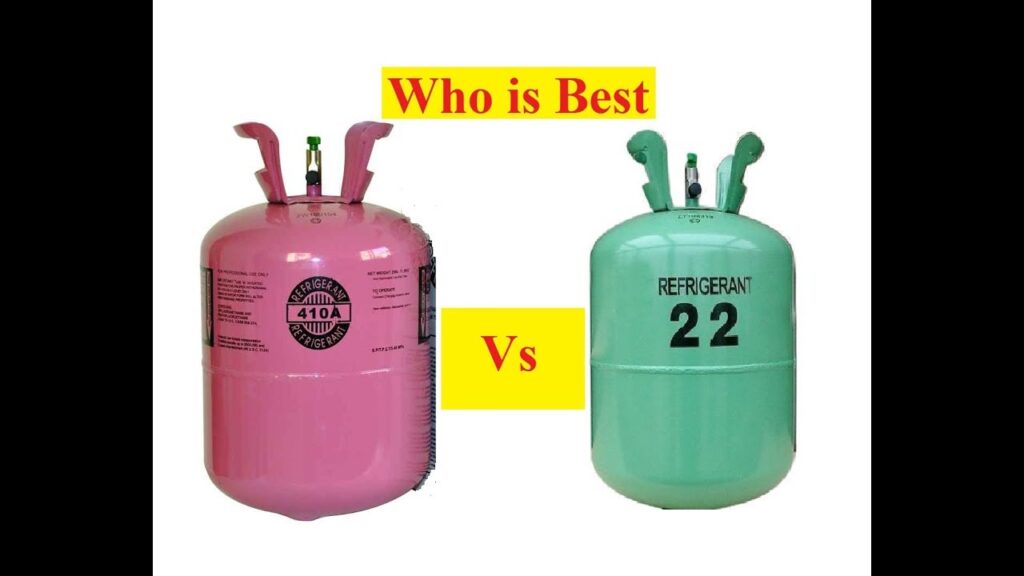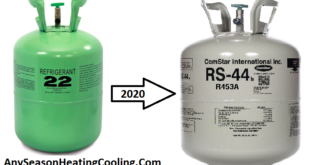When it comes to air conditioning and refrigeration, the type of refrigerant used is an important factor to consider. Two popular types of refrigerants used in these applications are R410A and R22. While both serve the same purpose of absorbing heat from a space and releasing it outside, there are significant differences between the two. In this article, we will explore the differences between R410A and R22 refrigerants, and which one is the better choice for your needs.

What is R410A Refrigerant?
R410A is a hydrofluorocarbon (HFC) refrigerant that is commonly used in modern air conditioning and refrigeration systems. It is a blend of two HFCs, difluoromethane (R32) and pentafluoroethane (R125). R410A is known for its high cooling capacity, which makes it an excellent choice for high-temperature applications. It also has a lower ozone depletion potential (ODP) and global warming potential (GWP) compared to older refrigerants like R22.
One significant advantage of R410A is that it can handle higher pressures than R22. This means that it can transfer heat more efficiently, leading to better overall performance. It also requires less refrigerant than R22, making it a more environmentally friendly option.
However, R410A is not a drop-in replacement for R22. If you have an older air conditioning or refrigeration system that uses R22, you cannot simply switch to R410A without making some modifications. R410A requires different components than R22, such as a different compressor and expansion valve. This means that if you want to switch from R22 to R410A, you will need to replace the entire system.
What is R22 Refrigerant?
R22, also known as Freon, is a hydrochlorofluorocarbon (HCFC) refrigerant that was commonly used in air conditioning and refrigeration systems until it was phased out in 2020. R22 has a high cooling capacity and is effective at absorbing heat from a space and releasing it outside. However, it has a high ODP and GWP, which makes it harmful to the environment.
One significant disadvantage of R22 is that it is being phased out due to environmental concerns. The manufacture and importation of R22 were banned in the United States in 2020, which means that it is no longer available for use in new air conditioning and refrigeration systems. While existing systems that use R22 can continue to be serviced with reclaimed or recycled R22, the cost of this refrigerant is likely to increase as its availability decreases.
R22 is also known for its high-pressure levels. While this can be an advantage in some cases, it can also lead to leaks and other issues if the system is not properly maintained. Additionally, R22 requires more refrigerant than R410A, making it a less environmentally friendly option.
R410A vs. R22: Which One is Better?
When comparing R410A and R22 refrigerants, it is important to consider their performance, environmental impact, and cost. Here are some of the key differences between the two:
-
Performance
In terms of performance, R410A is generally considered to be superior to R22. R410A has a higher cooling capacity, which means that it can cool a space more quickly and effectively than R22. It also operates at a higher pressure, which allows it to transfer heat more efficiently. Overall, R410A is a more efficient refrigerant than R22, leading to lower energy consumption and lower operating costs.
-
Environmental Impact
When it comes to environmental impact, R410A is a better option than R22. R410A has a lower ODP and GWP compared to R22. ODP refers to the potential for a substance to deplete the ozone layer, while GWP refers to the potential for a substance to contribute to global warming. R22 has a significantly higher ODP and GWP compared to R410A, making it harmful to the environment. The phase-out of R22 is part of a global effort to reduce the use of refrigerants that have a high impact on the environment.
-
Cost
In terms of cost, R410A is generally more expensive than R22. This is because R410A requires different components than R22, which can add to the cost of installation or retrofitting. Additionally, the cost of R410A refrigerant can be higher than R22, although this may vary depending on factors such as location and availability. However, the efficiency and environmental benefits of R410A can lead to lower operating costs over time, which may offset the initial higher cost.
Which Refrigerant is Right for You?
When choosing between R410A and R22 refrigerants, there are several factors to consider. If you have an older air conditioning or refrigeration system that uses R22, you may be able to continue using it for a while with reclaimed or recycled R22. However, as the availability of R22 decreases, the cost of this refrigerant is likely to increase, making it less cost-effective over time. Additionally, R22 is harmful to the environment and is being phased out, so switching to a more environmentally friendly option may be a good choice.
If you are installing a new air conditioning or refrigeration system, R410A is a good option to consider. While it may be more expensive initially, it is more efficient and has a lower impact on the environment. Additionally, since R22 is being phased out, it may be difficult to find replacement parts or refrigerant for an older system in the future. By choosing a newer refrigerant like R410A, you can ensure that your system is up-to-date and compliant with current EPA regulations.
Conclusion
When it comes to choosing between R410A and R22 refrigerants, there are several factors to consider. While R22 has been a popular refrigerant for many years, it is being phased out due to environmental concerns. R410A is a newer refrigerant that is more efficient and has a lower impact on the environment. While it may be more expensive initially, the long-term benefits of R410A may outweigh the cost. Ultimately, the choice between R410A and R22 depends on your specific needs and circumstances, but it is important to consider the environmental impact and efficiency of each option.
 E340 USA – Economy – HVAC – Energy – Health – Education
E340 USA – Economy – HVAC – Energy – Health – Education

